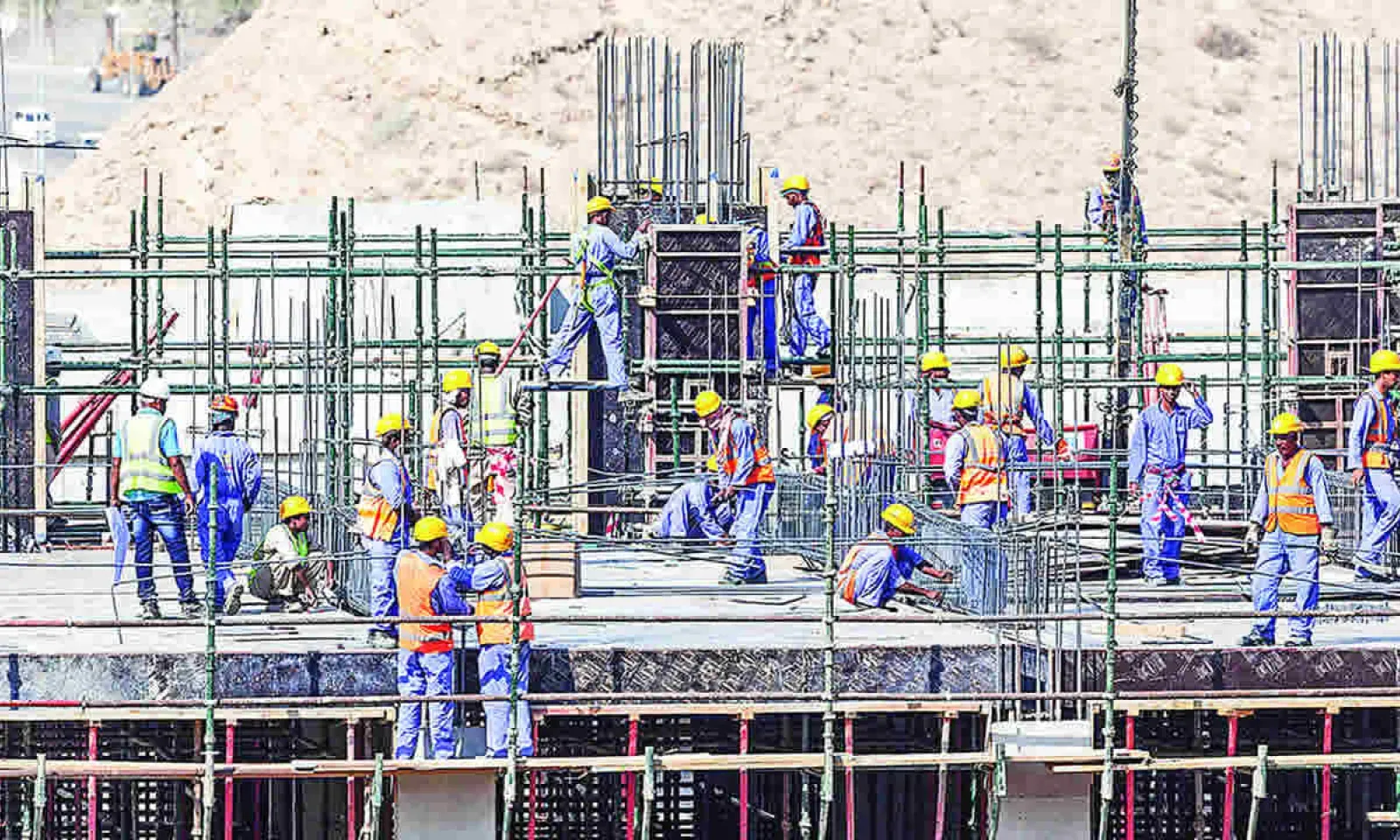
The economy seems to be banking heavily on the construction sector in 2018 for a robust boost. With a high number of projects kicking off this year, the sector is visibly in full ebullition. This year is also crucial for the Construction Industry Development Board in its rebranding process and the implementation of its Action Plan.
The new year has started with a rise in the price of cement by one supplier. Hardware shops state that prices of other materials such as steel bars, nails, binding wire, etc have seen an increase. It is likely that there will be other price hikes. However, these have not dampened the spirit of a rebounding sector after years of contraction. Stakeholders in the construction sector are optimist that this field will register remarkable growth rates this year.
On its side, the Construction Industry Development Board (CIDB) is gearing up its rebranding exercise and the implementation of its five-year Action Plan. In existence since 2008, The CIDB is not very popular among the masses. Most people are unaware of the CIDB’s role as regulator of the construction industry.
The CIDB initially started with the registration of consultants and contractors, but its regulations are currently in the process of being amended to include other fields of consultancy as well as individuals operating in the construction sector. The aim of the exercise is to bring on a same platform all actors of the construction industry providing products and services to the business. The Chairman of the CIDB is Mrs Nadia Daby Seesaram and Mr Ram Bahadoor is the Executive Director.
The CIDB has, among its main objectives, the promotion and development, as well as improvement, of the local construction industry. It also aims for sustainable growth and pays special attention to the participation of Small and Medium Enterprises in the industry. The CIDB looks, among other things, at the awareness for a safe and healthy environment for construction workers, promotes quality assurance of the building sector, aims at establishing best practice and encourages research and development.
As part of its functions, the CIDB regulates the sector by registering service providers, implementing government policy pertaining to the construction industry, provides advisory services to the industry and to members of the public in general, receives complaints from aggrieved parties and assist in dispute resolution.
Recent performances
According to Statistics Mauritius, there has been a sharp decline of – 4.3% in the year 2015, mainly explained by delays observed in the implementation of both major public and private projects. In 2016, a ‘no growth’ was recorded in 2016, after five consecutive years of contraction.
Interestingly, 2017 saw a huge rebound, with growth estimated at 7.5%. It should be noted that the construction sector contributes around 4.3% to overall Gross Domestic Product. With regards to employment, it is estimated that the sector employed 39,600 persons in 2016, which is a sharp decline from the estimated 47,900 employed in 2011.
In 2015, the figure stood at 40,200 compared to 46,600 in 2014. Around 3,000 workers are foreigners.
Year 2018 forecasts
Statistics Mauritius forecasts the growth rate in the construction sector to be 9.5% for the year 2018, assuming implementation of major public investment projects announced, such as the pursuit of the Road Decongestion Programme, the Metro Express project, Ports infrastructure, etc.
This growth is also dependent on implementation of major private projects such as smart cities and this calls for timeous and efficient processing of permits.
Challenges ahead
The construction industry has its own challenges. The availability of skilled workers is a major issue. Many construction companies import labour from countries such as China or Bangladesh in order to be able to meet delivery deadlines.
The processing of permits, licences and clearances is also a major constraint as any bureaucratic delay means important projects could be delayed, thus resulting in costs escalations. The increased construction activity might also cause short term shortage of essential materials, which can cause price rise.
Furthermore, the advent of a minimum salary might impact the construction sector as companies will have a higher wage bill, which increases overall operating costs. Bad weather causing floods is another impediment to construction activities.
|
|||||||||||||||||||||||||||||||||||
|
||||||||||
The total number of local contractors registered is actually 965 with some of them being registered in more than one class of works, which accounts for the above total of 1182.
|
||||||||||||||
The total number of local consultants registered is actually 128 with some of them being registered in more than one field of specialisation, which accounts for the above total of 171.
Illegal workers?
It is a fact that many construction companies recruit foreign skilled workers, mainly from Bangladesh and China. News on Sunday met a few Bangladeshi workers who claim to be working for local construction companies, but they complain that their work permits are not being renewed by their employer.
Some of them have their permits expired since months but they continue to work. Despite repeated requests to their companies, their work permits are not renewed. The workers say they are being forced to work ‘illegally’ and if caught, they might be deported and be blacklisted for no fault of theirs.
Unfortunately, they refuse to give their details to enable News on Sunday take up the matter further, for fear of reprisal or dismissal.
Booming property market
Apart from public investment programmes, the construction sector is being driven by massive investment into the real estate sector. There has been a sharp increase in the number of projects approved under the Property Development Scheme, and higher awareness and enhanced marketing campaigns for the sale of villas to foreigners is causing a boom in the property sector.
The number of estate agencies is also on the rise, as well as marketing tools, for example the proliferation of giant billboards advertising beachfront and other villas for foreigners. The property boom has also resulted in land speculation, with landowners abandoning cultivation and hoping for a multi-million deal with foreign investors.
With land prices soaring, local buyers are struggling to have a grip on the property market. The government on its side benefits from 5% registration fee and 5% land transfer tax on the sale of each luxurious villa to non-citizens, while promoters have to pay a social contribution of Rs 25,000 per residential unit.
Costs estimate
According to the Construction Industry Development Board, the construction of a house costs on average between Rs 700 and Rs 1,000 per square feet. The cost depends on the house concept and the land topography. This estimate includes the structure and plastering of a house.
The finishing works can cost between Rs 1,200 and Rs 1,500 per square feet. This includes internal and external painting, aluminium openings, plumbing and electrical works as well as sanitary wares and lights, tiling of floors, internal doors, septic tank, boundary wall and gate.
The CIDB provides useful guidelines to members of the public on the design of houses to save on construction costs and electricity bills and to protect against flooding, among others.
Gérard Uckoor : “Access to funding is a major constraint”
 The president of the Association of Small Contractors, Gérard Uckoor, says he is satisfied the construction sector in Mauritius appears to be rebounding. After a 7.5% growth last year, he says we could be in for a 9.5% growth in 2018, if all the announced projects are on track.
The president of the Association of Small Contractors, Gérard Uckoor, says he is satisfied the construction sector in Mauritius appears to be rebounding. After a 7.5% growth last year, he says we could be in for a 9.5% growth in 2018, if all the announced projects are on track.
“Small contractors have been impatiently waiting for a boom in the sector. We can see things evolving positively but we hope that small contractors will find their share in all the major projects and not benefit only from crumbs, with the major share going to big construction companies.”
Gérard Uckoor says small construction firms also have their importance and most often large companies have to rely on small firms for some of the work. However, competition is tough and, while big companies employ mostly foreign labour, small construction businesses employ mainly local labour, which is costly.
“A typical daily wage ranges between Rs 1,000 and Rs 1,500 for a good quality worker. We create jobs for locals,” he says, adding that small enterprises do not really face labour shortage.
“The main constraint is access to funds to solve our liquidity problems. For example, if a small contractor bags a contract, he must have a proper initial cash flow to start the work. Similarly, for some bids, he must provide a guarantee,” he explains.
Unfortunately, the MyBiz facility for SMEs does not necessarily cater for construction companies, so it is difficult for small contractors to obtain loans to finance working capital. When asked whether small contractors will benefit from the Metro Express project, Gerard Uckoor says he is confident small players will find opportunities in this venture.
Rishi Ramjus : “Innovation is the key”
 Rishi Ramjus is a small building contractor who also specialises in the rental of construction equipment such as diggers and excavators. He undertakes general construction works as well as land preparation and excavation. He says that the construction sector has becoming highly competitive, with a rise in the number of contractors.
Rishi Ramjus is a small building contractor who also specialises in the rental of construction equipment such as diggers and excavators. He undertakes general construction works as well as land preparation and excavation. He says that the construction sector has becoming highly competitive, with a rise in the number of contractors.
“There was a decline in the sector during the past few years, but things seem to be improving now. This year, many projects are in the pipeline and there will be opportunities arising for small and medium contractors,” says Rishi Ramjus.
He explains that in the residential segment, people have a tendency to go for the cheapest contractor, but the cheapest is not always the best. “With increasing costs of materials and labour, a contractor is obliged to pass over the higher costs to the client. If the client wants a work of quality, then he must understand that quality has a price.”
Our contractor says that innovation is the key to survive. A contractor must be able to cut costs whilst not compromising on quality. “Today, there are new products and new methods available on the market to make things easier. For example, the use of innovative products like corner blocks or U blocks allows us to save on formworks and shutterings.”
Rishi Ramjus adds that there is an increasing number of projects under the Property Development Scheme (PDS) and also apartment projects aimed at foreign buyers, and this is stimulating the construction sector, especially in the North.
However, mainly big construction companies obtain these contracts. He proposes that the government comes up with Renovation and Regeneration Schemes for existing buildings to further stimulate the sector and create opportunities for small contractors.
“New morcellements with affordable plots will help beat the housing crisis and reinforce the construction sector.”








